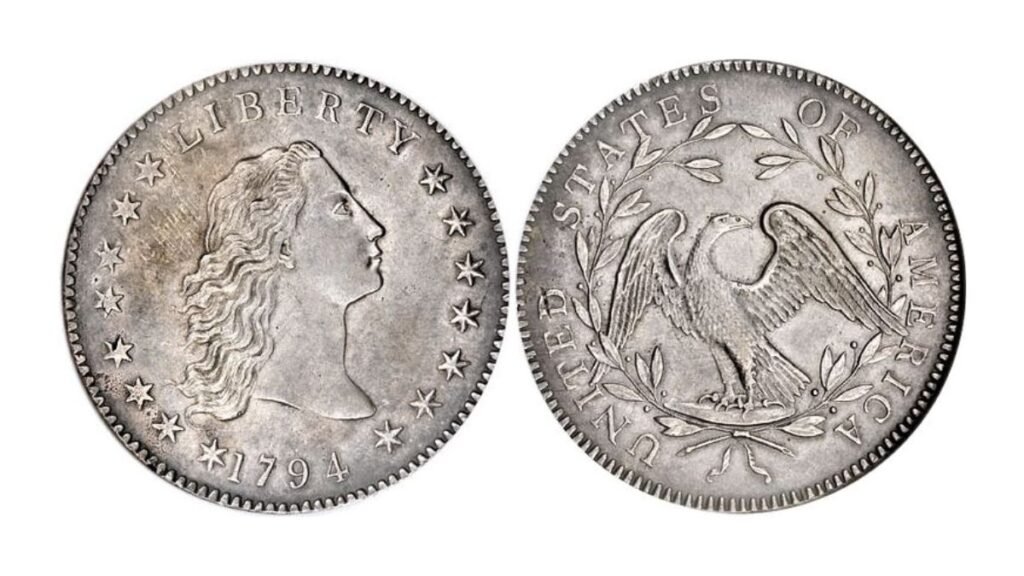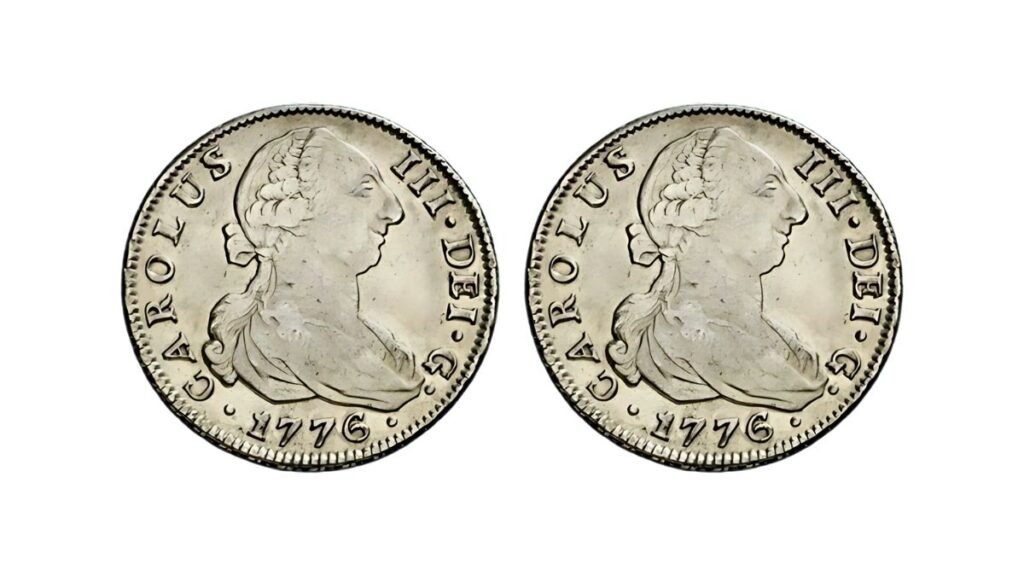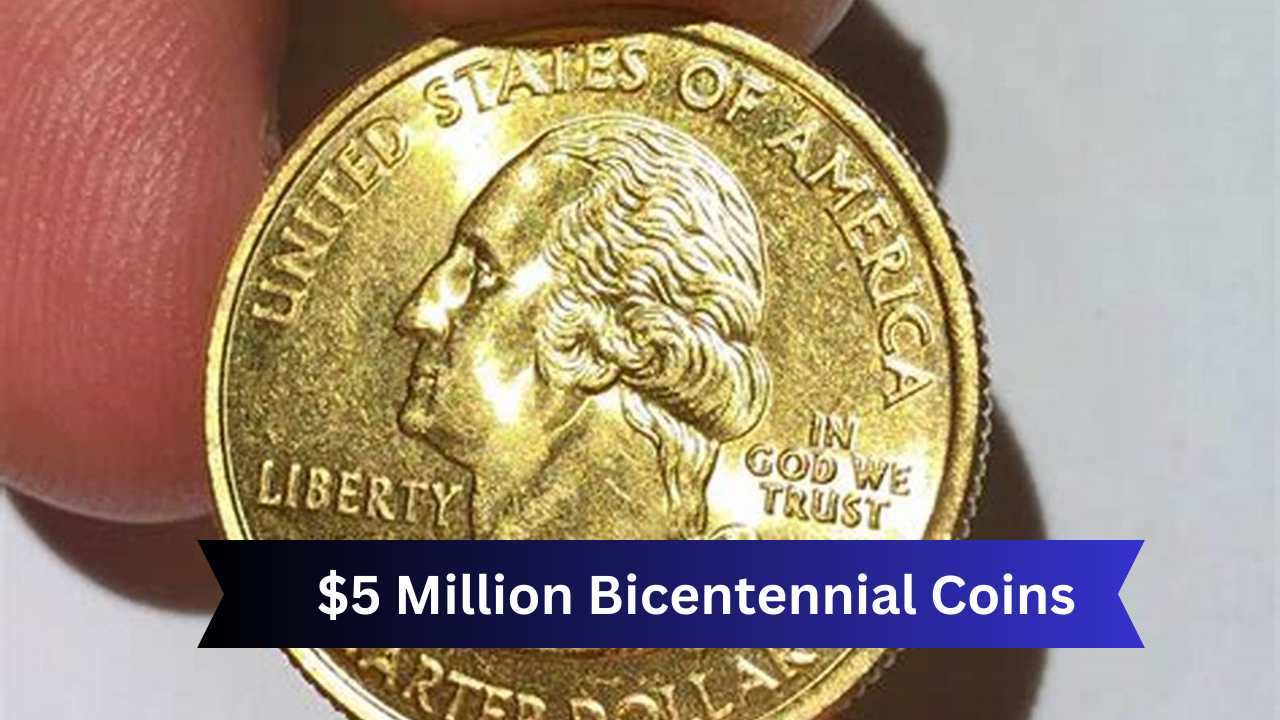Find the $5 Million Bicentennial Coins: 1976 marked the United States’ 200th birthday and was celebrated in a very memorable series of coins to commemorate American independence’s Bicentennial. Among all these coins, the Bicentennial quarter is the one that stands out for its striking design and its historical importance. Although millions were minted, some rare coins have become a legend, claimed to be valued at up to $5 million. Do you have one of these treasures lurking in your stash?
In this article, we’ll explore the fascinating history of Bicentennial coins, explain what makes them valuable, and provide actionable steps to identify and potentially profit from these commemorative pieces. Additionally, we’ll delve deeper into the artistry behind these coins, their cultural importance, and how collectors can maximize their investment in numismatics.
The $5 million Bicentennial coin is more than just pocket change; it’s a symbol of American history and a potential treasure for collectors. By understanding what makes these coins valuable and taking steps to identify and preserve them, you might find a treasure in your collection. Whether you’re a seasoned numismatist or a curious beginner, the hunt for rare Bicentennial coins is an exciting journey into America’s past. With careful research and preservation, your collection could hold a story as valuable as the coins themselves.
Discover the $5 Million Bicentennial Coins
| Fact | Details |
|---|---|
| Top Value | Some Bicentennial coins, due to rarity and errors, are valued as high as $5 million. |
| Unique Design | Features dual dates (1776-1976) and a drummer boy design by Jack L. Ahr. |
| Mint Variants | Produced in Philadelphia, Denver, and San Francisco mints, with special 40% silver versions available. |
| Valuable Errors | Errors like double strikes, off-center printing, and misprints increase a coin’s value. |
| Key Resource | Use PCGS for authentication and grading. |
What Are Bicentennial Coins?

Coins were minted for the Bicentennial of America’s 200 years of independence. The quarter, half dollar, and dollar all have distinct designs rather than a traditional one. Among the distinctive coins is the Bicentennial quarter, with a drummer boy on the reverse and dual dates “1776-1976” on the obverse. Jack L. Ahr designed the drummer boy to symbolize American patriotism and resilience.
The U.S. Mint made these coins in 1975 and 1976, and they entered circulation. Nearly all Bicentennial quarters are relatively common and are valued at face. However, some exceptions are highly collectible, including errors that were accidentally produced during minting and silver proofs. It is not just the money. It is a taste of American heritage and a celebration of its continued independence.
Why Some Bicentennial Coins Worth Millions?
Several factors determine the cost of Bicentennial coins, especially the rare ones that can sell for millions. Understanding these factors will help collectors identify and grade their exclusive coins.
1. Errors of Minting
Mistakes made during the minting process can result in unique coins that are very valuable. For instance:
- Double Striking: Coins that are struck twice lead to overlapping designs. The errors make the coin aesthetically different and thus rare.
- Off-Center Strikes: Misaligned minting creates partial designs, which add another level of uniqueness.
- Wrong Planchet Errors: Coins that are struck on the wrong metal planchet, like a Bicentennial quarter minted on a dime planchet, can bring big premiums.
These errors are scarce and often not intended, which makes them extremely attractive to collectors who cherish their uniqueness.
2. Silver Composition

Bicentennial quarters were minted in standard copper-nickel clad, but the U.S. Mint did strike 40% silver collector versions. The coins were available in special mint and proof sets and were not released into circulation. Because they contain a certain amount of silver and have a relatively low mintage, these coins are considerably more valuable. With changing silver prices, the coins possess intrinsic as well as collectible value.
3. Proof Coins
Proof coins are minted with specially polished dies, giving them a mirror-like finish. Bicentennial-proof quarters, especially those with cameo contrast, are highly prized for their aesthetic appeal and craftsmanship. Collectors often seek these proof coins for their unparalleled detail and luster.
4. Condition and Grading
Coins in mint, uncirculated condition bring a premium price. Professional grading services such as PCGS or NGC assign grades that greatly affect the value of a coin. A high-grade Bicentennial quarter can sell for thousands, while errors or rare varieties can sell for millions. Proper preservation techniques, such as storing coins in air-tight holders, can help preserve their condition.
Find the $5 Million Bicentennial Coins Determine a Valuable Bicentennial Coin
Finding a valuable Bicentennial coin requires careful inspection. Follow these steps to determine if you’re holding a treasure:
1. Check the Mint Mark
The mint mark, indicating where the coin was produced, is located on the obverse side, to the right of Washington’s hair ribbon.
- No Mint Mark: Philadelphia Mint
- D: Denver Mint
- S: San Francisco Mint (Proof or Silver editions)
2. Inspect for Errors
Use a magnifying glass to look for anomalies such as:
- Double strikes
- Off-center designs
- Missing details
These can raise the price of a coin significantly.
3. Confirm the Composition
Bicentennial quarters in silver look and weigh differently from copper-nickel. An expert assessment can determine the presence of metal. Weighing with a digital scale and examining with magnification equipment can make initial determinations.
4. Evaluate the Condition
Only absolutely pristine coins that have no signs of wear or scratches are truly valuable. Consider storing your coins in protective cases to preserve them. Scratches, tarnish, or any other imperfection can greatly depreciate a coin’s value.
5. Have Professional Grading
Submit your coin to a third-party grading service such as PCGS or NGC for authentication and an official grade. Grading lends authenticity to the coin, and significantly impacts its value within the market. A higher-graded coin, therefore, boasts better preservation than others but is much more desirable for a collector.
Examples of Highly Valuable Bicentennial Quarters
1. 1976-S Silver Proof Quarter

- Mintage: Made only for special silver proof sets
- Rarity: Price: Extremely high-grade specimens go for thousands.
- Key Features: Mirror-like surface and “S” mint mark. These coins are sought after for their unique luster and clarity.
2. Double-Strike Error Quarters
- Background: Extremely rare minting errors in which the design is struck twice, causing images to overlap.
- Value: Depending on the extent of the error and the coin’s grade, these can bring tens of thousands.
3. 1976-D Mint State Quarter
- Background: Although relatively common, uncirculated examples in top condition (MS67 or higher) can be valuable.
- Value: One sold for $6,462 at auction, highlighting the importance of pristine preservation.
FAQs:
How do I know if my Bicentennial quarter is valuable?
Look for rare features such as minting errors, a silver composition, or proof quality. Professional grading services can provide an accurate assessment.
Are all Bicentennial quarters rare?
No. Most Bicentennial quarters are common and worth face value. Only rare variants, such as errors or silver proofs, hold significant value.
Where can I sell a valuable Bicentennial coin?
You can sell through auction houses, online marketplaces, or coin dealers. Ensure the coin is authenticated and graded for maximum value.

